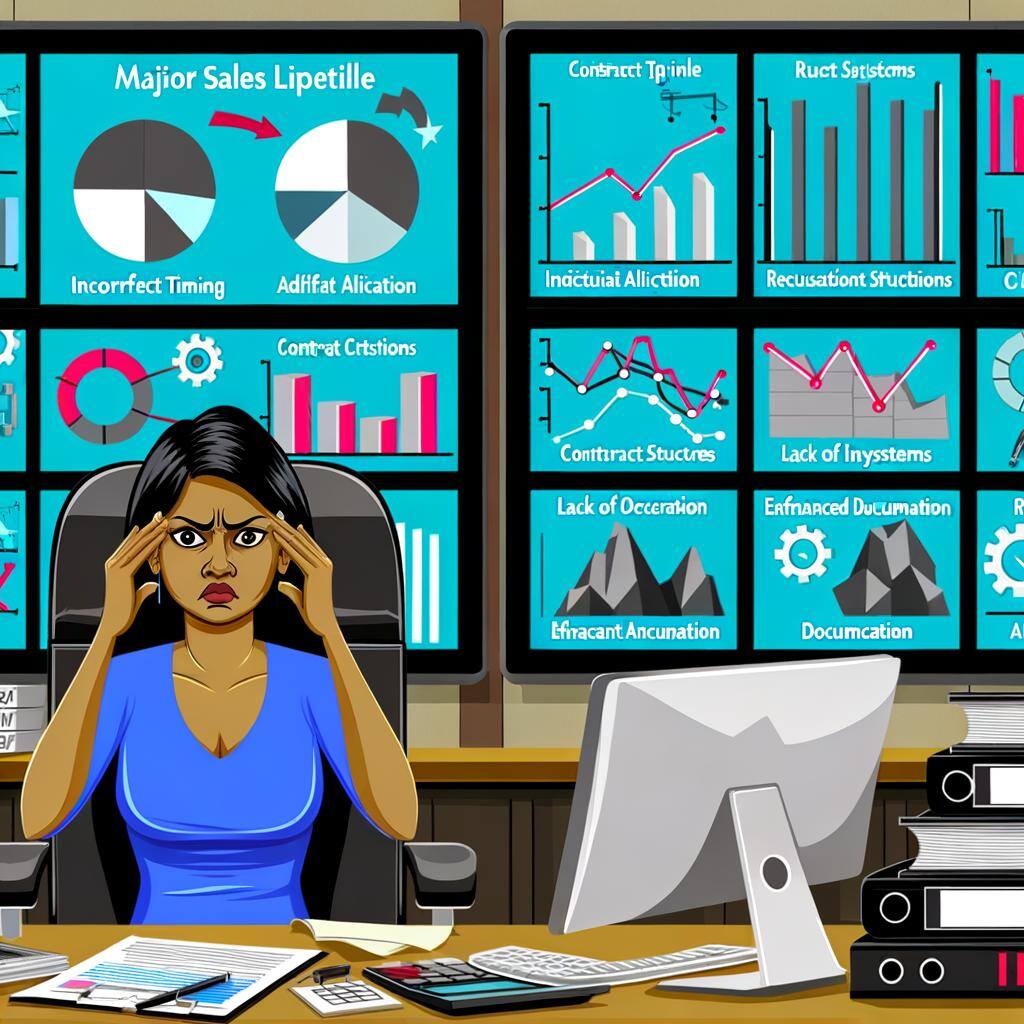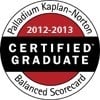As someone who has worked within a publicly traded company, who also had a major sales pipeline, meaning the company expected me to deliver considerable (think 8 figures) revenue, I often felt both pressured and irritated when the CFO or COO grilled me about my sales close forecast.
CFO's are Under the Gun
For the CFO in particular, it was because he had to manage revenue recognition. But because handling revenue recognition also involves people from both sales and delivery, it was a challenge to get agreement on when and how much revenue to recognize.

Just what were some of the challenges he faced:
Incorrect timing of revenue recognition:
A key revenue recognition principle is that revenue should not be recognized too early or too late, which can lead to inaccurate financial reporting and potential compliance issues.
Fix:
Have your SAP FICO expert implement proper revenue recognition rules and controls following GAAP revenue recognition principles within SAP FICO to ensure revenue is recognized in accordance with relevant accounting standards (e.g., IFRS 15 or ASC 606). This may involve configuring revenue recognition schedules, defining recognition criteria, and automating the process to ensure consistency and accuracy.
Inadequate allocation of revenue
Revenue from bundled products or services may not be properly allocated across different performance obligations, leading to misrepresentation of revenue and profitability.

Now that SAP can be consumed from the cloud, in often very complex product configurations, this can get hairy.
Fix
Your SAP FICO implementation team needs to configure SAP FICO to support allocation methodologies prescribed by accounting standards, such as relative standalone selling price or adjusted market assessment. This may involve setting up allocation rules and logic within the system to accurately distribute revenue among different deliverables or elements of a contract. This is where you really need the services of a SAP FICO Architect, as there are number of twist and turns in SAP FICO configuration as well as SAP Contract Lifecycle Management (SAP CLM). Other areas which may need to be addressed include when you are using SAP Investment Management for projects you performing for customers which will have cash flows spread over long periods of time, such as the construction of a new oil refinery.
Complex contract structures
Revenue recognition may be complicated by complex contract terms, variable consideration, or multiple deliverables, making it challenging to determine the appropriate timing and amount of revenue to recognize.

With the arrival of Smart Contracts based on Block Chain technology, this has gotten even more complex to comply with.
Fix
Enhance contract management capabilities within SAP FICO (SAP Financial Management and Controlling) to support the recognition of revenue under various contract scenarios. This may involve implementing contract modification controls, variable consideration estimation methods, and contract segmentation features to facilitate accurate revenue recognition.
Lack of integration with sales and billing systems
Disconnects between sales orders, billing records, and revenue recognition processes can result in errors and discrepancies in revenue recognition.

Fix
Integrate SAP FICO with sales and billing systems (beyond the standard inter-module integration) to ensure seamless flow of data and synchronization of revenue recognition activities. This may involve establishing data interfaces, validation checks, and reconciliation processes to reconcile revenue recognized in SAP FICO with sales and billing transactions. For complex sales, which may involve various sales transactions over a period of years, which is also relevant for sales forecasting, proper SAP FICO configuration is essential and must be thoroughly tested. This includes scenarios implemented within SAP S/4 HANA and SAP ECC.
Insufficient documentation and audit trails
Inadequate documentation of revenue recognition decisions and lack of audit trails can make it difficult to demonstrate compliance with accounting standards and regulatory requirements.

Fix
Enhance documentation and audit trail capabilities within SAP FICO to capture key revenue recognition assumptions, judgments, and revenue recognition requirements changes over time. This will ensure your revenue recognition practices evolve with the standards as they evolve. Revenue recognition methods constantly evolve (surprisingly, how you count your chickens is not a static process). This may involve implementing new workflow approvals, updaing documentation templates, and implementing tracking mechanisms to ensure transparency and accountability in the revenue recognition process.
For interested readers, these regulations are related to revenue recognition include:
-
IFRS 15 (International Financial Reporting Standard): Provides guidance on recognizing revenue from contracts with customers, including principles for identifying performance obligations, determining transaction price, and allocating revenue.
-
ASC 606 (Accounting Standards Codification): The US GAAP equivalent of IFRS 15, which outlines similar principles for revenue recognition and is applicable to companies reporting under US accounting standards.
SAP FICO Consulting Best Practices
Our team of SAP FICO consultants can help you improve your revenue recognition outcomes.

Combining SAP FICO Best Practices along with multiple SAP full-lifecycle implementations, they help clients improve their financial performance every day. Use the button to request SAP FICO Consulting support.



